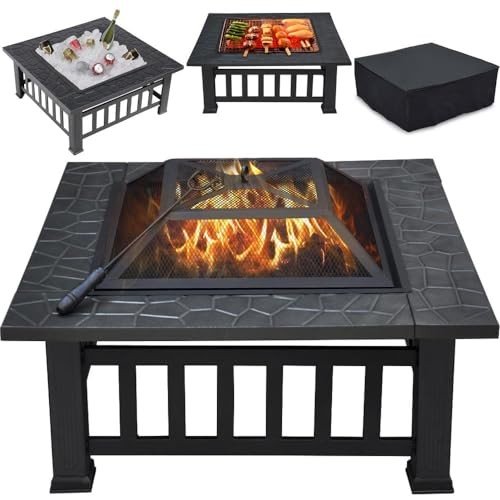The Comprehensive Guide To Fireplace

The Charm and Functionality of Fireplaces: A Comprehensive Guide
Fireplaces have long been a main feature in homes, signifying heat, companionship, and convenience. They come in numerous styles, products, and fuel types, dealing with the choices and requirements of varied property owners. This post delves into the multifaceted world of fireplaces, exploring their history, types, installation factors to consider, and upkeep ideas, while offering FAQs to resolve common queries.
A Brief History of Fireplaces
Historically, fireplaces worked as the cornerstone for cooking and heating homes. In ancient times, an open hearth was typically placed in the center of a dwelling. Over centuries, architectural improvements assisted in the development of more sophisticated styles, developing from easy stone structures to elaborate mantels that command modern living spaces.
Key Historical Milestones:
- Ancient Times: Open fires in caverns and primitive huts for heat and cooking.
- Middle Ages: Large, frequently centralized chimney structures in great halls of castles.
- Renaissance: Decorative mantels and designs gain popularity, with the fireplace ending up being a symbol of wealth and status.
- Industrial Revolution: Advancements in materials and making allow for a broader variety of fireplace styles.
- Modern Era: Gas and electric fireplaces end up being commonplace, allowing for increased convenience and safety.
Kinds of Fireplaces
Today, numerous kinds of fireplaces are available, each with its unique attributes. Below is a breakdown of the most common types:
| Fireplace Type | Description | Pros | Cons |
|---|---|---|---|
| Wood-Burning | Traditional fireplaces sustained by wood. | Genuine experience, heat output. | Labor-intensive, requires correct venting/maintenance. |
| Gas | Fireplaces that use gas or lp. | Easy to use and maintain. | Less atmosphere compared to wood. |
| Electric | Utilizes electricity to produce heat and flames. | Safe, no venting needed. | Limited heat output, higher energy costs. |
| Bioethanol | Uses bioethanol fuel, producing tidy flames. | Eco-friendly, portable. | Needs routine refueling. |
| Pellet | Utilizes compressed wood pellets as fuel. | Clean burning, sustainable. | Needs power for operation. |
Additional Considerations
When picking a fireplace, it is important to think about elements such as:
- Fuel Availability: Consider what fuels are readily available in your area.
- Area and Aesthetics: The size of your living area and your style preferences should assist your choice.
- Structure Regulations: Always consult local regulations to ensure compliance and safety.
Installation Considerations
Setting up a fireplace involves more than merely positioning a structure in your house. Extensive preparation, expert input, and adherence to security codes are critical. Here are some critical steps:
- Planning: Consider the size and kind of fireplace, where it will be put, and its intended usage.
- Consultation: Hire a licensed professional to assess your home and make sure appropriate setup.
- Allows: Obtain any needed structure licenses from regional authorities.
- Materials: Select suitable products for the fireplace and surrounding location. Ensure Buy Fireplace are fire-resistant and created for your fuel type.
Upkeep Tips for Fireplaces
Routine maintenance ensures your fireplace operates securely and effectively. Here are important maintenance tips classified by fireplace type:
Wood-Burning Fireplaces
- Chimney Cleaning: Have your chimney cleaned up each year to avoid creosote accumulation.
- Check for Damage: Check for fractures and damage to the firebox and chimney structure.
- Fire wood Storage: Store firewood away from your home to avoid bug problems.
Gas Fireplaces
- Log Inspection: Regularly take a look at ceramic logs for cracks and change if essential.
- Vent Cleaning: Ensure that vents are devoid of blockages.
- Pilot Light Check: Test pilot lights and ignition systems frequently.
Electric Fireplaces
- Cable Inspection: Frequently check electrical cables for tearing or use.
- Tidy Surfaces: Wipe down surfaces regularly to eliminate dust and particles.
- Smoke Detectors: Ensure smoke alarm in the vicinity are functional.
Bioethanol and Pellet Fireplaces
- Fuel Storage: Store fuels in a cool, dry place away from direct sunlight.
- Regular Refueling: Monitor fuel levels and refuel as required.
- Ventilation: Ensure correct ventilation when utilizing these fireplaces.
Frequently asked questions About Fireplaces
Q1: Do I require a license to set up a fireplace?
Yes, most municipalities require permits for fireplace setups to ensure security and compliance with regional building regulations.
Q2: How frequently should I clean my chimney?
It is recommended to have your chimney cleaned at least when a year, particularly if you use your fireplace frequently.
Q3: Can I convert a wood-burning fireplace to gas?
Yes, many property owners transform wood-burning fireplaces to gas for convenience, but seeking advice from an expert is recommended to make sure an appropriate conversion.
Q4: Do electric fireplaces produce heat?
Yes, electric fireplaces can produce heat; nevertheless, their main function is often for atmosphere, making them a suitable option for those who want a fire look without comprehensive heating.
Q5: Are bioethanol fireplaces safe?
Bioethanol fireplaces are typically safe when utilized properly; however, they need appropriate ventilation, and users need to follow all producer standards.
Fireplaces not just include aesthetic appeal to homes however also offer practical heating options. With Cheap Fireplace Online , styles, and maintenance requirements, homeowners can make educated options that best suit their needs and way of lives. Whether selecting the charm of a wood-burning fireplace or the benefit of a gas model, a fireplace can considerably improve a home's convenience and environment. As the hearth remains a centerpiece in homes, it continues to cultivate warmth, conversation, and connections among friends and family.

